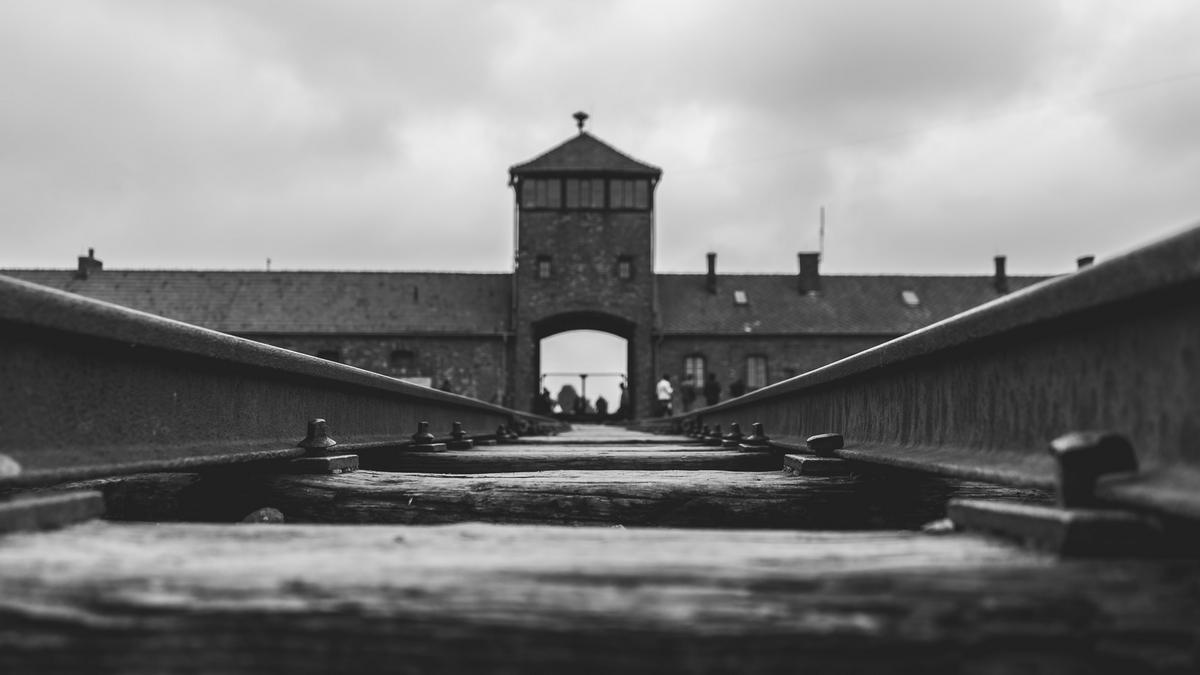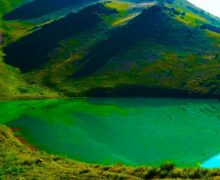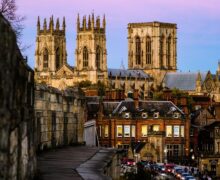Dark tourism market is fast becoming popular among the adventure seeking tourist population

Photo: Unsplash
History does tell us about the past, but the question is how many people actually go on reading history books to get acquainted about the past Travels to the actual sites that have experienced a great deal of struggles and tragedies arouse interest in people.
The Dark tourism, also called as grief tourism or black tourism is a type of tourism that involves travelling to places that are historically associated with tragedy and death. There are different categories of dark tourism – grave tourism, holocaust tourism, genocide tourism, cold war and iron curtain tourism, communism tourism, disaster area tourism, paranormal tourism, battlefield tourism and nuclear tourism.
According to Future Market Insights, there are many tourist spots that are indirectly or directly connected with death, like battlefields, museums and prison camps. Dark tourism is related to heritage and culture tourism and therefore history plays a vital role here. This facilitates the transfer of information regarding the past including unsung heroes and their struggles.
History does tell us about the past, but the question is how many people actually go on reading history books to get acquainted about the past Travels to the actual sites that have experienced a great deal of struggles and tragedies arouse interest in people.
And those people who hate reading history books get curious about the past because they actually visit and confirm with their own eyes – seeing is believing! Many case studies were carried out in this sector for example the study of Robben Island (South Africa), District Six (Cape Town) and The Apartheid Museum in Johannesburg.
Dark Tourism: Aspects Driving Sector Growth
There are many tourist attractions such as beautiful landscapes with scenic beauties, wild life areas, etc. However, dark tourism focusses on sites that have associations with the past, be it a death site or a land where war has occurred or some heart-stopping tragedies have taken place.
The popularity of dark tourism is dependent on the number of tourists opting for vising dark sites. Motivating factors for tourists can be clubbed into biological and socio cultural forces that stimulate the behaviour of people. The desire to explore the unknown and unusual or paranormal can be considered as the pushing factors for dark tourism. Some of the general drivers are:
- Sites such as graveyards could be fascinating and prospective areas for possible retrospective and spiritual purposes
- Thrill and risk seeking lures tourists who like adventure, excitement and curiosity
- Need to get acquainted with the knowledge of a place that has experienced a tragedy like mass murder; again curiosity places a key role here
- Self-discovery and learning about such sites to boast about them later in social groups
- Urge to visit sites that have immortal memories linked with people or even stories about haunted mansions etc.
- Other religious reasons
Main factor that drives this sector is a fascination for the term “death” – even though it is negative and harsh, many people are curious to understand the term, as the concept of death itself is inevitable in nature and cannot be conquered.
Dark tourism can also be linked to heritage tourism, and hence the sites could have significant historical influence too, rather than being a mere site where a tragic event has taken place. Empathy could be one more aspect that relies on the visitor’s ability to know the heroic stories that might have taken place at a particular location. Emotional facet is an additional arm of motivation, as emotions create a sense of gratitude, insecurity, superiority or humility.
All these factors are intertwined with one another. The field is still being researched upon to understand the “why” aspect, which is literally driving people to visit places with dark attractions and activities.
The above mentioned aspects are just one angle that totally resides or depends upon the psychology of the individual that govern human traits and give rise to reasons such as “Ethical Must”, “Educational Motives”, “Roots Tourism” and “Empathy and Curiosity” which motivate the individual to visit dark sites, driving the upsurge of the dark tourism sector.
Dark Tourism: Factors Hampering Sector Growth
Along the push factors, there are also the pull factors associated with the dark tourism sector. A tourist attraction may be educational or exploitative; this depends upon the visitors visiting the place. “Misinformation” about a place, hiding or omitting the challenges that were actually faced is a growth restraining factor for the dark tourism sector.
Then there are sites involving voyeurism, which questions the ethics of this sector. Other sector growth killers include high costs charged to tourists, insufficient facilities offered to tourists, negative marketing and publicity of dark tourism sites, negative perception of dark tourism and lack of skilled personnel to maintain the sites.
Dark Tourism: Worldwide Locations
Dark tourism is scattered worldwide. There are different dark tourism sites across the world, few of which are mentioned below:
- Concentration and Extermination Camp in Auschwitz (Poland)
- Ground Zero – The National September 11 Memorial (USA)
- Dow Hill in Kurseong (India)
- Hiroshima Peace Memorial Park (Japan)
- The Dracula’s Castle – Bran Castle (Transylvania)
- Alcatraz Federal Penitentiary (San Francisco, USA)
- Island of the Dolls (Mexico)
- Jack The Ripper (London)
- Bhangarh Fort (India)
- Kuldhara (India)
- Jallianwala Baug (India)
All these sites play a vital role in the concerned regional economy and in maintaining the image of that particular region. Generally, the destinations that are shortlisted as sites for dark tourism include museums, slums, historical ruins, cemeteries, war scenarios and areas where tragic incidents have occurred.
Dark tourism brings to life the past, the tragic incidents that occurred and the historical image they reflect due to which a region becomes popular. The dark tourism sector is influenced by these destinations as they tend to attract a lot of people, spreading the concept of dark tourism.
source: Travel Daily News




